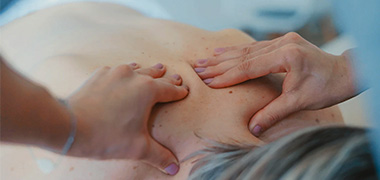
How do I become a ayurvedic practitioner?
Advanced Diploma of Ayurveda
- There are no mandated entry requirements.
 EQUALS International
EQUALS International
Diploma of Remedial Massage
- There are no mandated entry requirements.



Diploma of Clinical Hypnosis and Strategic Psychotherapy
- There are no mandated entry requirements.
 The Institute of Applied Psychology
The Institute of Applied Psychology
Advanced Diploma of Remedial Yoga Therapy
- There are no mandated entry requirements.
 College of Therapy Yoga and Zen Shiatsu
College of Therapy Yoga and Zen Shiatsu
Diploma of Ayurvedic Lifestyle Consultation
- There are no mandated entry requirements.
 EQUALS International
EQUALS International
Certificate IV in Yoga Therapy Teaching
- There are no mandated entry requirements.
 College of Therapy Yoga and Zen Shiatsu
College of Therapy Yoga and Zen Shiatsu
Related occupations
Aromatherapist
An Aromatherapist uses essential oils to treat physical and emotional health issues, providing personalised care in clinics or home offices.
Remedial Massage Therapist
Remedial Massage Therapists treat muscle issues and dysfunctions using various techniques, aiding athletes and chronic disease patients.
Massage Therapist
Massage Therapists use various techniques to help clients relax, recover, and destress, working in clinics, spas, resorts, or fitness centres.
Myotherapist
A Myotherapist treats soft tissue issues using massage, acupressure, and other techniques, working in clinics or home-based offices.
Shiatsu Massage Therapist
A Shiatsu Massage Therapist treats clients by applying pressure to key body points, addressing issues like back and neck pain while requiring strong communication skills.
Remedial Yoga Therapist
A Remedial Yoga Therapist tailors yoga to support clients’ specific health needs, offering individual or group sessions to address physical or chronic issues.
Natural Therapist
A Natural Therapist treats patients using natural techniques like aromatherapy, massage, and herbal medicine, creating tailored plans.
Reflexology Therapist
A Reflexology Therapist applies pressure to specific points on clients' feet, hands, or ears to enhance health and well-being, while educating them and maintaining treatment records.
Acupuncturist
An Acupuncturist uses fine needles to relieve pain and enhance well-being, creating treatment plans and working in clinics or wellness centres.
Herbalist
A Herbalist develops treatment plans using plant-based remedies, assesses symptoms, prepares herbal medicines, and offers lifestyle guidance.
Naturopath
A Naturopath uses alternative therapies to treat patients, specialising in areas like herbal medicine or acupuncture, with strong communication skills.
Philosophy Teacher
A Philosophy Teacher instructs on philosophical theories, ethical dilemmas, and critical thinking, fostering independent thought through discussions and assessments.
Clinical Hypnotherapist
A Clinical Hypnotherapist uses hypnosis to help clients manage psychological issues by promoting positive change through relaxation.
Common questions
How much does an Ayurvedic Practitioner earn?
In Australia, a full time Ayurvedic Practitioner generally earns $1,800 per week ($93,600 annual salary) before tax. This is a median figure for full-time employees and should be considered a guide only. As you gain more experience you can expect a potentially higher salary than people who are new to the industry.
What are the job opportunities for an Ayurvedic Practitioner?
This industry has seen a drop in employment numbers over the last five years. There are currently 9,700 people working in complementary health therapies in Australia, and many of them specialise as an Ayurvedic Practitioner. Ayurvedic Practitioners may find work across all regions of Australia.
Source: Australian Government Labour Market Insights
How do I become an Ayurvedic Practitioner?
If you’re interested in a career as an Ayurvedic Practitioner, consider enrolling in a Diploma of Ayurvedic Lifestyle Consultation. This course will give you the skills to make Ayurvedic lifestyle assessments and diagnose conditions within an Ayurvedic framework. An Advanced Diploma of Ayurveda may also be appropriate.
Further reading


How to become a qualified Occupational Therapist or Physiotherapist in Australia
23rd December 2024)

